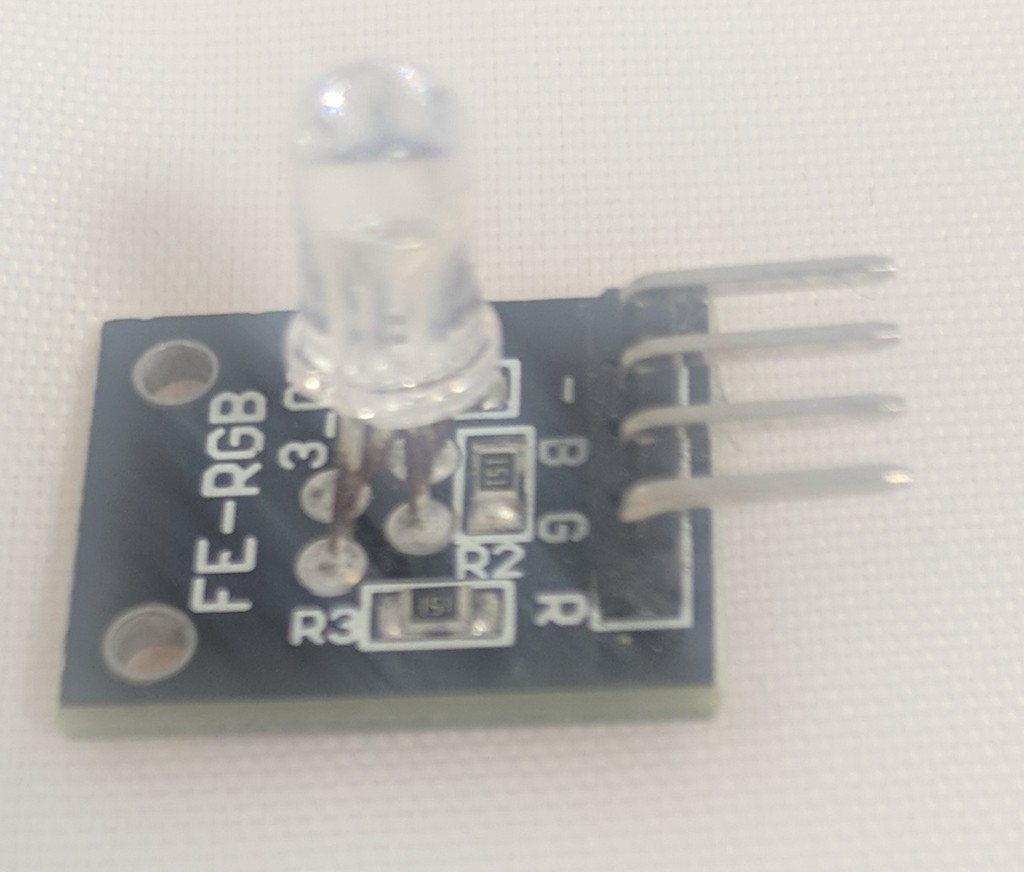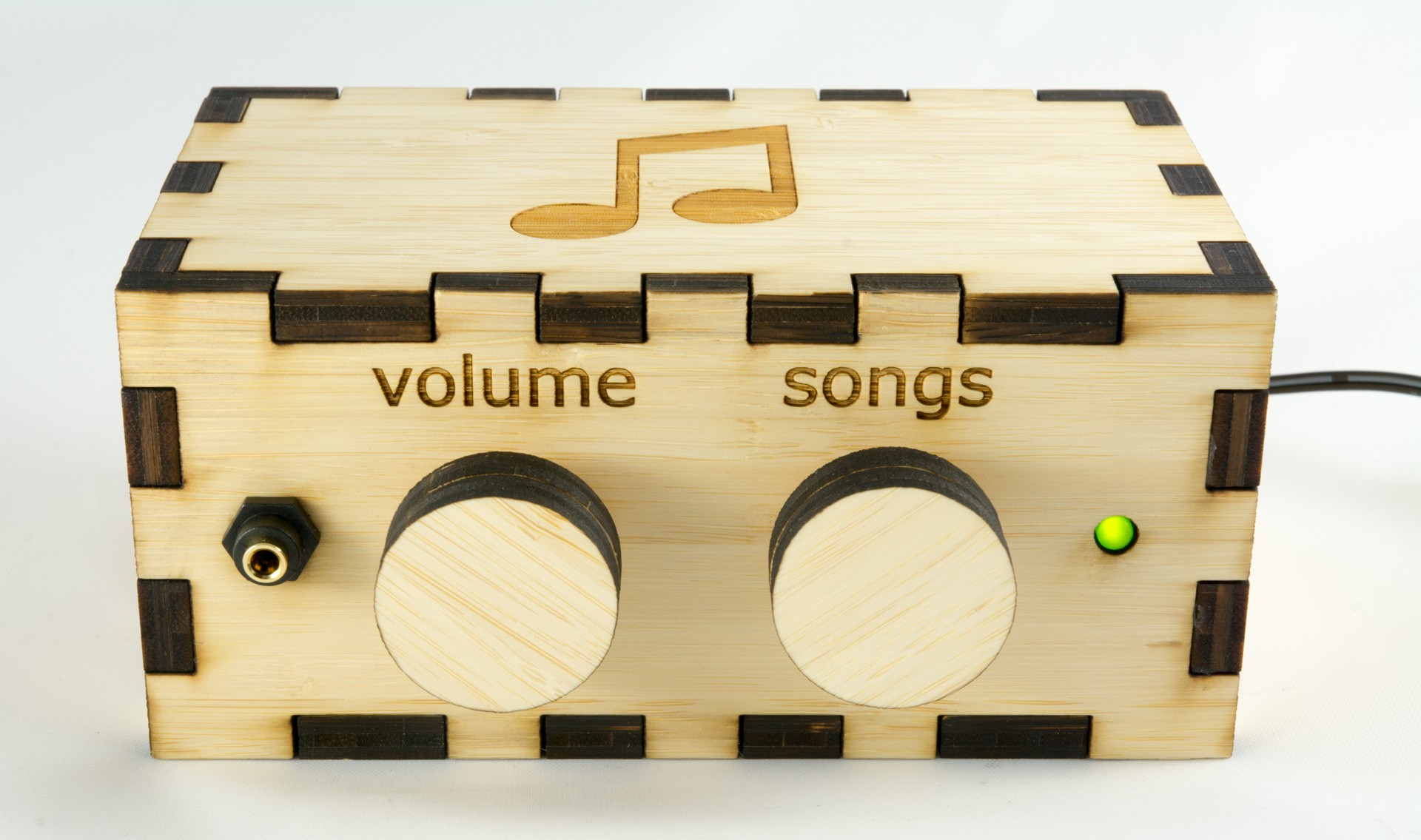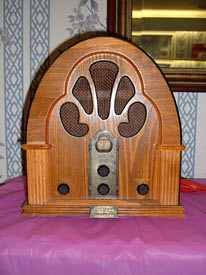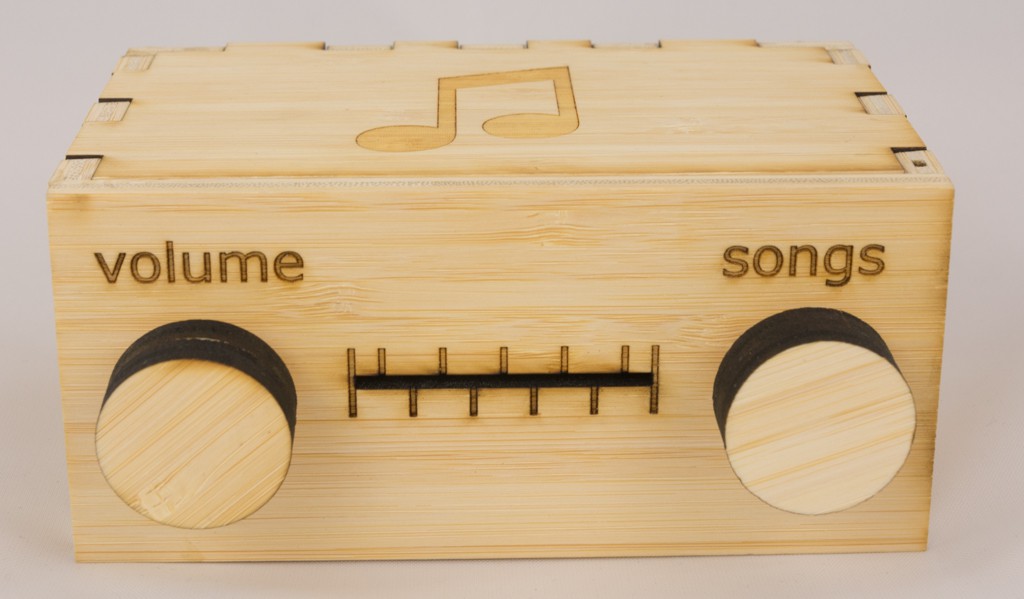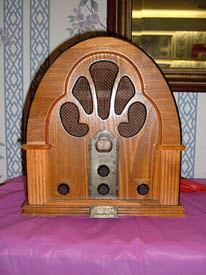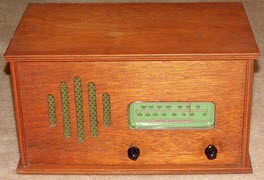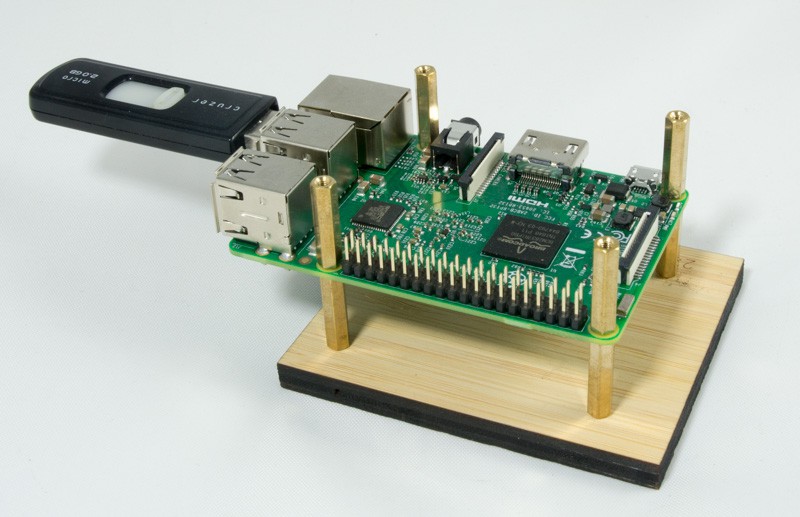-
Final Update to the Production Model
10/15/2017 at 03:47 • 0 commentsI just made the final update to the production model. It's a small change -- to use a different LED module. But it's worth discussing because it illustrates the principle of keeping the project easy to make for a wide variety of makers.
This is the new part, a Keyes KY-016 LED module:
![]()
It has integrated headers and resistors. So it continues the no-soldering-required approach. For anyone on Hackaday, this is a trivial project to build. That's a good thing. But I also want to keep it *possible* to build for a large segment of the population, so the devices can get made for those that need them.
I just updated the build instructions to reflect this, including updated photographs.
-
Retro
10/14/2017 at 21:36 • 0 commentsWhy is this music player dementia-friendly? I get that question from people that don't know anyone with dementia. Those of you that know someone with dementia probably already know why -- because it leverages the old strong memories. In other words, because it is retro. More specifically because it operates like a 1940s era two knob radio. And those memories from youth are often the last to go.
So I thought I'd experiment with going more retro. There isn't enough time left in this challenge to change the production model. But there is enough time to experiment. For clarity, the production model is ready for you to build now and I'm not going to make any major changes in the next few weeks. So what you see below is the direction that I might go later.
This is the current production model:
![]()
This is a 1932 cathedral-style radio (courtesy of Broken Sphere / Wikimedia Commons) , which I think is iconic and thus usefully retro:
Creating a cathedral-style music player would be more expensive and more complex. I look forward to that challenge e.g. learning things like laser cutting a living hinge to follow that cathedral curve. My suspicion is that it would increase the cost of parts, and I want to keep the project financially accessible for makers. So I thought I'd experiment with something simpler:
![]()
I added vertical engravings to mimic the look of frequency gradations on a radio dial. And there is a long horizontal cut that I was hoping to backlight, again to mimic a radio dial. Alas, I couldn't get an effective backlight without violating my rule of no soldering (another way of keeping the project accessible to lots of makers). My favorite part of this is the greater separation of the knobs - I think that makes it look a bit more like a 1940s radio. My least favorite part is that I had to move the headphone jack to the side.
Ultimately, I decided that if I'm going to go more retro, I'm going to go all-in and aim for the cathedral style.
The next project log will be about the one small tweak that I'm making to the production model.
-
Customer Feedback
10/10/2017 at 04:43 • 0 commentsI have been actively seeking customer feedback. I have given away about fifteen music players. I had a table at the Seattle Maker Faire. And I've also gotten feedback from makers that otherwise found and made the project. For clarity, I don't sell anything, so I don't really have customers. But I want the device to get into the hands of people that need it, so I treat everyone like a customer as best I can.
Feedback from people with dementia:
- People with mild to moderate dementia can usually operate the device!
- Brings joy.
- People with severe dementia usually need help from a caregiver.
Feedback from caregivers:
- The device is not mobile, and some users naturally wander.
- It doesn't integrate with the Apple iTunes-driven system associated with the national Music & Memory program. (the device can play Apple music files, but of course the iTunes app does not recognize the device as an iPod).
- But also, a caregiver suggested that the music files on a USB thumb drive approach is easier than the iTunes approach.
- Caregivers have suggested that the device is a good fit for part of the general senior living population, not just those with dementia.
Feedback from makers:
- It's pretty easy to make. e.g. At the Maker Faire, seven people did live builds at my table, successful in each case.
- A 3D printed case would be nice (the current case is laser cut wood).
From prospective customers:
- This is largely based on the 150 or so conversations that I had with passers-by at the Seattle Maker Faire.
- Those prospective customers that know someone with dementia generally immediately recognized why the retro/simple design makes it dementia-friendly.
- Those who don't know someone with dementia were puzzled -- why is it dementia-friendly?. After a few sentences, they got it. But I could do a better job of making this clear in the signs, in the name of the device, or possibly in the design of the device.
There is more feedback. But the above is a decent summary of key comments.
There isn't much time left. So most of the above comments are for a post-finals version. But I have done a little experimenting and I'll publish the results in the next project log.
-
Free making opportunity at Seattle Mini Maker Faire 16-17 Sept
09/12/2017 at 21:02 • 0 commentsThe Seattle Mini Maker Faire gave me a table. The Faire is this weekend i.e. 16-17 September. At my table you can sign up for a making session. I give you the parts for this dementia-friendly music player, and I'm there to answer any questions. I'm providing the parts for free for these sessions (parts for eight players). All I ask is that you know someone in need to give it to.
-
The six evenly weighted criteria
08/31/2017 at 03:32 • 0 commentsThere are six criteria for this Assistive Technology Challenge. How did the project do? Here is my biased evaluation. This is sort of like doing a self-evaluation at work. That is, it’s important to convey key information, be self-critical, but also a bit self-promotional :-).
How thoroughly have the entry requirements been completed?Reasonably complete. Here is a quick summary compiled from above and from various project documents.
- Challenge. Bring the joy of favorite music to people with dementia, even those that can no longer operate a CD player or iPod. Make it easy to build.
- Alleviation. MP3 player that looks and operates like an old time two knob radio i.e. makes use of the old strong memories to create something that is immediately familiar. Easy enough for kids to build – no soldering, no woodworking.
- World changing. 47 million people with dementia, and increasing. We can bring some joy to them. A key intent is to connect makers to their elders in need – everybody wins.
- Image illustrating use. I took many photos of working builds. And I wrote detailed step-by-step build instructions, complete with photographs.
- Repositories. https://github.com/rosswesleyporter/dqmusicbox
- Licenses. GPL for code, CC BY-NC-SA for the laser cut design. See Github repository for more details.
Does this project address the current challenge?
Is it assistive? Yes. My Dad (DQ) could no longer use CDs and iPods, but he could use this project. The project is named for him – DQMusicBox. Now I’m hoping that it’s assistive for a lot more people.Does the project benefit society in some way?
Yes, it specifically helps those with dementia. The documentary Alive Inside shows the profound joy that favorite music can bring to those with dementia. The documentary covers the Music & Memory Foundation. There are now 3,000 memory care and other care institution that now have Music & Memory programs. But many people with dementia are no longer capable of using CD and iPods. Two societal benefits: 1) Bring the joy of favorite music to people with dementia. 2) Bring the joy of giving to makers, including kids directly helping their elders.
Is there base-level planning for the functionality (eg: functional block diagram, list of specifications and how they will be met, etc.)?
Yes, the project is well documented. During the challenge I completed the step-by-step build instructions including a validated parts list, many high-res photos, and a wiring diagram. During the challenge, I also completed a requirements document and a design document. The laser cutting case plans are also available.
How well documented is the project. Could the work be replicated?
Yes, absolutely, see directly above.
Is the project creative, original, functional, and pushing boundaries?
It’s creative and original in the sense that I couldn’t find anything else like this (if I had, I would not have done the project). It’s fully functional, ready for other people to build (a few people have during the challenge), and I’ve already given away a few to local memory care facilities. Is it pushing boundaries? It does use a TMP_WRITE_PROTECTED micro-SD card and it takes an unusual route to get great sound from a Pi. But other than that, it deliberately doesn’t push boundaries where it doesn't have to – I wanted it to be easy enough and cheap enough for lots of people to build (including kids). -
Your thoughts for the next version?
08/20/2017 at 19:21 • 0 commentsAs you may have seen, the project is ready to build -- it's quite stable, well documented, has a streamlined build process, and the parts cost has been optimized. Let's call this the standard version. I'd love it if lots of makers make the standard version and thus help lots of people with dementia. That's a key reason that I'm on Hackaday with this project.
If the standard model does get traction, then I'll design a pro model. And if I'm lucky, maybe there will be a team to design the pro model (someone has already reached out, which is great). The pro model can have a higher parts cost, so that opens up some possibilities. I'd like your thoughts on that pro model. I'll take whatever thoughts you have. Here are my thoughts on possibilities:
- More vintage look & feel. Make it even more recognizable / familiar to the recipient. Perhaps cathedral style: image of vintage radio below courtesy of Broken Sphere / Wikimedia Commons. You can buy radios in this style today, so the project might even change from a laser cut from scratch to gut and rebuild. Although I would find it very tempting to laser cut it. Or perhaps a 1950s box radio: image of vintage radio below courtesy of Joe Haupt / Wikimedia Commons. These are just a few quick thoughts -- lots of vintage look & feel options.
![]()
- Add a speaker(s). There is an issue with the recipient really cranking the volume and annoying caregivers etc. But otherwise it's a natural addition.
- Add graphic equalization that mimics a person's hearing aid profile. Someone with dementia probably also has a hearing aid, but the hearing aids can be a source of frustration as well. Perhaps this can be done in software.
- Model in 3D. The existing laser cutting plans are hand optimized in 2D, which make the plans harder to adapt for different wood thicknesses etc.
- Interference fit instead of glue fit. Such that the wood case can be assembled with a rubber mallet instead of wood glue. I experimented this, which was fun. But it increased the cost a bit, and I wanted to keep the parts cost down for the standard model.
- 3D printed case. I do like wood for familiarity / vintage reasons. But plastic might be OK. And someone just told me about 3D printing with wood composite filaments. I haven't looked into it yet.
- Make it easier to add/remove music. Adding and removing music from a USB thumb drive is quite easy for you and I. Less so for the elderly spouses that might be the caregiver. The device could be Internet connected, but that creates complexity as well.
- Give it appliance-like reliability. The standard model does quite a bit (read-only SD card etc.) to make a Pi-based solution reliable. For even greater reliability, maybe an Arduino approach (which, BTW, is harder than it sounds), or a custom circuit.
- Make it manageable. If these are to be used in a senior care center, make the devices centrally manageable in some way. That might require network connectivity.
- Add language options. Have laser cutting models or 3D printing models with translations of "volume" and "sound" labels.
I'd love to hear your thoughts.
-- Ross
-
Avoiding corruption with SD card write protection
08/12/2017 at 19:03 • 0 commentsMicro-SD cards can make Raspberry Pi projects less durable, particularly when power can be yanked at any time. This project log describes how to reduce SD card corruption with the rarely used TMP_WRITE_PROTECT feature in the SD card standard. It's a big hammer (love those!) and works well with DQMusicBox.
The DQMusicBox project already does SD card write *reduction* by using DIetPi and RAM logging. Thus, engaging TMP_WRITE_PROTECTION is optional. I love saying "optional" to a group of hackers -- it's like bait!
I was inspired to do this by the SD Locker project that I saw here on Hackaday. But I wanted to use a Pi to do this. So I setup a Pi 3 that boots from a USB thumb drive. I installed sdtool. Now when I want to TMP_WRITE_PROTECT a micro-SD card, I just pop it in the slot and run sdtool from the command line. Here is the rig that I use:
![]()
The slightly tricky bit was getting the Pi 3 to boot from USB. I used DietPi as it has setup support for USB booting. Detailed instructions for setup and use.
-
I will be exhibiting/making at the Seattle Mini Maker Faire
08/08/2017 at 02:14 • 0 commentsI will be exhibiting/making at the Seattle Mini Maker Faire, September 16-17. The Maker Faire people were nice enough to give me a table. So if you want to see a DQMusicBox (and me) in person, just stop by. Should be fun there -- I'm looking forward to seeing the pipe organ and the Luminescent Grand Piano. The Faire is at MoPOP (formerly the EMP Museum) near the Space Needle.
-
Design
08/03/2017 at 03:40 • 0 commentsI just published the design doc on github. Key bits below. Let's begin where we left off in the requirements -- with the challenging use-cases, and how the design satisfies those requirements.
Use-case: be familiar - the device should immediately seem familiar to the end-user.
Design: vintage radio on the outside, MP3 player on the inside.Use-case: update set of music e.g. adding albums - must be elderly-caregiver-friendly.
Design: music is stored in albums/folders on a regular USB thumb drive.
Use-case: play key music formats - support MP3, AAC/iTunes, FLAC.
Design: VLC (VLC-NOX specifically) handles music playback, so all key formats supported.Use-case: create playlist - create a playlist in some sensible order e.g. alphabetical by album.
Design: Python code scans the USB thumb drive, orders found music by album/folder name, and then hands this off as a single playlist to VLC-NOX.Use-case: have good audio quality - shouldn't suck.
Design: a firmware update from the Pi Foundation that dramatically improves audio quality.Use-case: support sudden shutdown - no issues if unplugged or if power is lost.
Design: read-only micro-SD card - TMP_WRITE_PROTECT bit set on micro-SD card.
I will write more project logs. I'm not sure which one will be next. Might be about the most convenient way to enable TMP_WRITE_PROTECT on micro-SD cards.Best,
Ross -
Requirements
07/31/2017 at 03:56 • 0 commentsHello all,
I just published the requirements (use-cases) on github. Key bits below. The next project log will be the design. I'm doing real (if concise) requirements and design docs to help anyone that wants to improve the project. And if schools decide to do builds, I want them to have start to finish project docs.
DQMusicBox is a conceptually simple thing, and deliberately so. You can see this in the requirements -- there aren't that many use-cases. I won't repeat all of the use-cases below. I'll jump straight into a discussion of the use-cases that place interesting constraints on the design.
Use-case: update the set of music on the device. The elderly non-technical spouse of the person with dementia may be the one adding and removing albums from the device. So a USB thumb drive method is better than a micro-SD method. But of course this a world of choices when thinking about this in the universe of implementation options (MP3 player boards, Arduino, Rasperry Pi, other SBCs, custom board, ...).
Use-case: play key music formats. Best to support MP3, AAC/iTunes, FLAC. Not a problem if the device uses a full operating system e.g. Raspbian. But challenging for MP3 player boards and Arduino.
Use-case: create playlist. Create a playlist in some sensible order e.g. alphabetical by album name. Easy for Raspbian, not for MP3 player boards.
Use-case: have good audio quality. It doesn’t have to be amazing, but it shouldn’t be awful. No problem for most tech options, but a challenge for some e.g. a Raspberry Pi sounds merely OK (though but this can be nicely resolved with a firmware update from the Pi Foundation).
Use-case: support sudden shutdown. The device should behave like a consumer electronics device e.g. you can unplug it with no issues. No problem for MP3 player boards and Arduino. For Raspbian et al, no problem if there is a battery, challenge if there isn't. Ideal for the executable bits to be on read-only storage (to resist corruption), keeping the music on separate writeable storage.
The next project log will be the design.
Best,
Ross
Dementia-friendly music player
Lovechild of MP3 & 1940s radio UI. For seniors with dementia who can no longer use CDs & iPods. Good project for kids.
 Ross Porter
Ross Porter